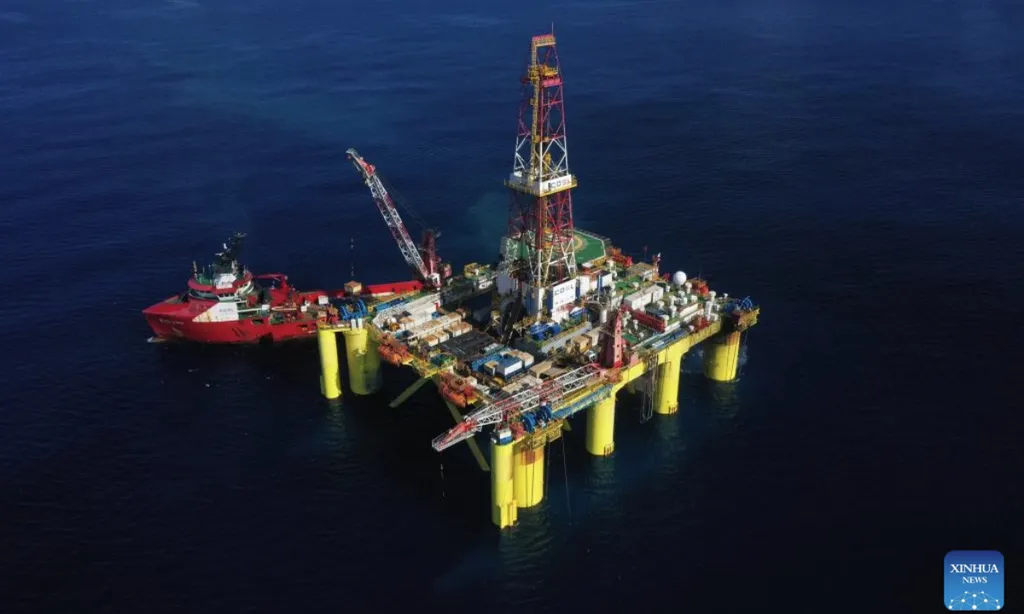In the relentless pursuit of optimizing oil extraction processes, a groundbreaking study has emerged from the collaborative efforts of researchers at CNOOC Research Institute Co., Ltd., and Southwest Petroleum University. The study, published in *Cailiao Baohu* (translated as *Materials Protection*), delves into the corrosion behavior of oil casing materials under the extreme conditions of CO2 injection flooding, offering critical insights for the energy sector.
The research, led by FENG Huanzhi and colleagues, focuses on the performance of high-chromium (high-Cr) steel and ordinary carbon steel in oil casings, which are subjected to high-temperature, high-pressure, and high-concentration CO2 environments. Using advanced techniques such as scanning electron microscopy (SEM), energy-dispersive spectroscopy (EDS), and X-ray diffraction (XRD), the team conducted weight loss corrosion experiments on four different oil casing steels to simulate real-world service conditions.
The findings are significant. Under the extreme conditions of CO2 flooding, the uniform corrosion rates of S13Cr and 22Cr tubing and casing steels were found to be significantly below the oilfield corrosion standard of 0.125 mm/a. Moreover, their pitting corrosion rates were also below the standard requirement of 0.130 mm/a. In stark contrast, the uniform corrosion rate of N80 oil casing steel was 0.426 mm/a, far exceeding the oilfield corrosion standard, while the uniform corrosion rate of 13Cr oil casing steel was 0.128 mm/a, slightly exceeding the same standard.
The study also revealed the nature of the corrosion products formed on the surfaces of the different steels. For N80 and 13Cr steels, the main corrosion products were FeCO3 and Fe-Cr, whereas for S13Cr steel, the primary corrosion products were Fe-Cr. Notably, the surface of 22Cr steel exhibited dense Cr2O3 and CaCO3 in addition to FeCO3. These corrosion products played a crucial role in inhibiting the corrosive action of CO2, resulting in 22Cr tubing and casing steel demonstrating the best corrosion resistance.
“Understanding the corrosion behavior of these materials is crucial for selecting the right tubing materials for CO2-driven oil wells,” said FENG Huanzhi, lead author of the study. “Our findings provide a theoretical basis for the selection of materials that can withstand the extreme conditions of CO2 injection flooding, ultimately enhancing the efficiency and longevity of oil extraction processes.”
The implications of this research are far-reaching for the energy sector. By identifying the most resilient materials for oil casings, companies can reduce maintenance costs, minimize downtime, and improve the overall efficiency of oil extraction processes. This is particularly relevant for the Bohai Oilfield, where CO2 injection flooding is a common practice.
As the energy sector continues to evolve, the need for materials that can withstand extreme conditions becomes increasingly critical. This study not only sheds light on the corrosion behavior of oil casing materials but also paves the way for future developments in material science and engineering. The insights gained from this research will undoubtedly shape the future of oil extraction, ensuring that the industry can meet the growing demand for energy while maintaining environmental sustainability.
In the words of the researchers, “This study provides a solid foundation for the selection of CO2 flooding gas well tubing materials, ensuring the safety and efficiency of oil extraction processes.” With the publication of this research in *Cailiao Baohu*, the energy sector is one step closer to achieving these goals.

